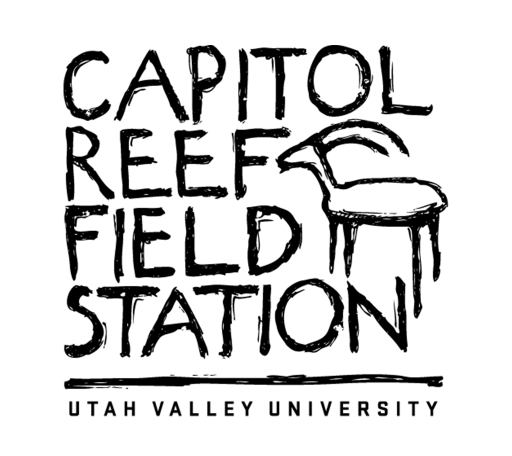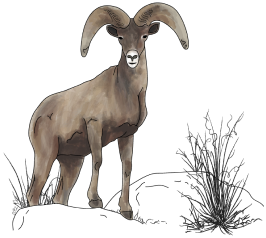Yucca harrimaniae Trel.
Viridiplantae > Streptophyta > Streptophytina > Embryophyta > Tracheophyta > Euphyllophytes > Spermatophyta > Magnoliopsida > Mesangiospermae > Liliopsida > Petrosaviidae > Asparagales > Asparagaceae > Agavoideae > Yucca > Yucca harrimaniae [1]
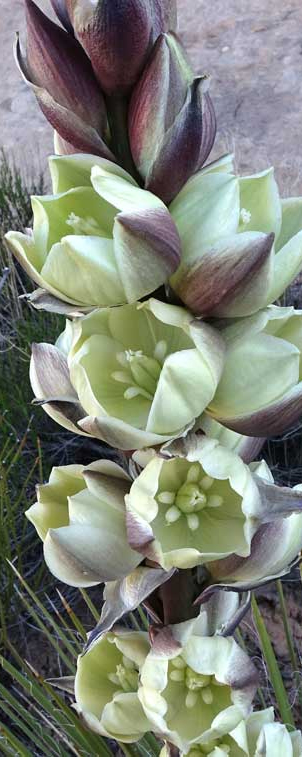
[4]
Plants acaulescent, forming dense small clumps of 1 to 22 rosettes; Leaves falcate or straight, lanceolate to spatulate-lanceolate, concavo-convex, deeply striate, rather thick and rigid, pale green, pungent apically, 1 to 5 dm long, 0.7 to 4 cm wide, the margin white or brown, in age filiferous, the fibers somewhat coarse and curly; Inflorescence 3.5 to 7 dm tall, racemose or rarely with a few short branchlets, extending from within the foliage to well above; flowers broadly campanulate, pendent, yellowish or greenish yellow to cream, tinged with purple, the segments broad, 4 to 5 cm long, 1.6 to 3.5 cm broad; Ovary 1.5 to 2 cm long, pale green; style 9 to 11 mm long, bright green; Capsule cylindric, with a short attenuate beak, 3.7 to 5 cm long, usually deeply constricted toward the center and flaring open when dried [2].
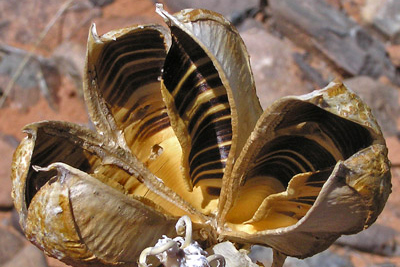
[4]
Yucca harimaniae can sometimes be confused with Yucca angustissima but they are easily distinguished by the height of the peduncle and inflorescence which can be 4+ feet tall for Y. angustissima whereas Y. harrimaniae is typically less than 2 1/2 feet tall. Flowers of Y. angustissima are white to pale green and generally taper at both ends whereas those of Y. harrimaniae often have a purple tinge and are broadly bell-shaped. However, when fully developed, the flowers or both species are almost always a creamy white. The lowest flowers of Y. angustissima open above the leaf tips whereas the lowest flowers of Y. harrimaniae open below the leaf tips. The upper side of Y. angustissima leaves are more flattened whereas leaves of Y. harrimaniae tend to be concave [4].
S. D. McKelvey included Yucca neomexicana within Y. harrimaniae [5] as did J. L. Reveal [6], who recognized neomexicana as a variety of harrimaniae. K. H. Clary’s [7] DNA studies contributed to a consensus tree in which Y. harrimaniae and Y. neomexicana are discrete and widely separated. These taxa are allopatric, separated by the San Juan Mountains of Colorado, and this along with Clary’s evidence supports their recognition as separate species [8].
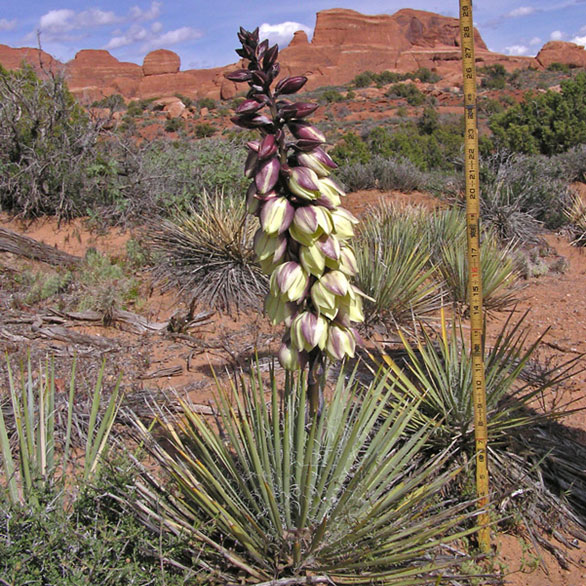
[4]
Contemporarily, yuccas have been used as a foaming agent in root beer, alcoholic beer, and cocktail mixers. The bittersweet dark brown extract is also used as an additive in ice cream and other foods [9]. The immature fruit is edible when cooked but has a bitter taste from the skin [10]. The flowers are said to be delicious raw, and can also be dried, crushed and used as a flavoring [3]. The whitish inner portion of the flowering stem and be peeled and cooked like asparagus [3].
The primary medical use of yucca is to treat arthritis and joint pain and inflammation [9]. Active components of yucca include steroidal saponins and polyphenolics such as resveratrol and yuccaols. Saponins may have anti-arthritic effects associated with their antiprotozoal activity [11].
Native Americans used sap from the leaves in poultices or baths to treat skin lesions, sprains, inflammation, and bleeding [9]. Teas made from yucca mixed together with other herbs are still brewed by folk healers in northern New Mexico to treat asthma and headaches. A fiber obtained from the leaves is used for making thread, ropes, baskets and mats [10-12]. The roots are rich in saponins and have been used as a soap substitute [10].
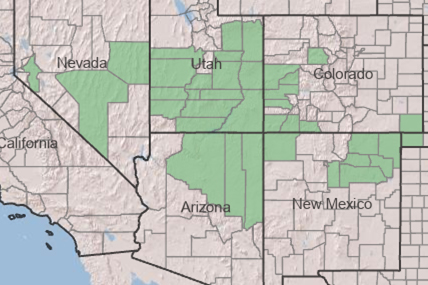
[4]
Yucca harrimaniae has most recently been assessed for The IUCN Red List of Threatened Species in 2018 and is listed as Least Concern [14].
This plant can be found in warm desert biomes, typically in shrubland, grassland, sagebrush, pinyon-juniper, and mountain brush communities between 1000 and 2700 m when in its native range [2].
[1] "Taxonomy Browser (Yucca Harrimaniae)." National Center for Biotechnology Information, www.ncbi.nlm.nih.gov/Taxonomy/Browser/wwwtax.cgi?mode=Info&id=480094&lvl=3&lin=f&keep=1&srchmode=1&unlock.
[2] Welsh, S. L. A Utah flora. 3rd ed., Brigham Young University Press, 2003. ISBN 0-8425-2556-4
[3] USDA NRCS National Plant Data Team. "Yucca harrimaniae Trel. Plant Profile." USDA Plants Database, plants.usda.gov/home/plantProfile?symbol=YUHA.
[4] Yucca Angustissima and Harrimaniae." Southwest Colorado Wildflowers, www.swcoloradowildflowers.com/White%20Enlarged%20Photo%20Pages/yucca%20angustissima%20and%20harrimaniae.htm.
[5] McKelvey, S.D. 1938. Yuccas of the Southwestern United States. Part 1. 150pp. Jamaica Plain, Mass.
[6] Reveal, James L. 1977. “Yucca” in Intermountain Flora 6: 530, eds. A.J. Cronquist, A.H. Holmgren, N.H. Holmgren, J.L. Reveal, & P.K. Holmgren. Hafner Pub. Co.
[7] Clary, K.H. 1997. “Phylogeny, character evolution, and biogeography of Yucca L. (Agavaceae) as inferred from plant morphology and sequences of the internal transcribed spacer (ITS) region of the nuclear ribosomal DNA.” Dissertation. University of Texas at Austin.
[8] Hess, W.J. & L. Robbins 2003. “Yucca” in Flora of North America 26: 436. Oxford University Press, USA
[9] "Yucca." Encyclopedia.com, 28 May 2018, www.encyclopedia.com/plants-and-animals/plants/plants/yucca.
[10] Harrington. H. D. 1967. Edible Native Plants of the Rocky Mountains. University of New Mexico Press, ISBN 0-8623-0343-9.
[11] Cheeke, P.R. et al, 2006. “Anti-Inflammatory and Anti-Arthritic Effects of Yucca Schidigera: A Review.” Journal of Inflammation 3:6
[12] Sargent. C. S. 1965. “Manual of the Trees of North America.” Dover Publications Inc. New York.
[13] Balls, E. K. 1975. “Early Uses of Californian Plants.” University of California Press
[14] Hodgson, W., Puente, R., Clary, K. & Salywon, A. 2020. Yucca harrimaniae (amended version of 2018 assessment). The IUCN Red List of Threatened Species 2020: e.T117428002A182251312. https://dx.doi.org/10.2305/IUCN.UK.2020-3.RLTS.T117428002A182251312.en. Accessed on 15 September 2022.
